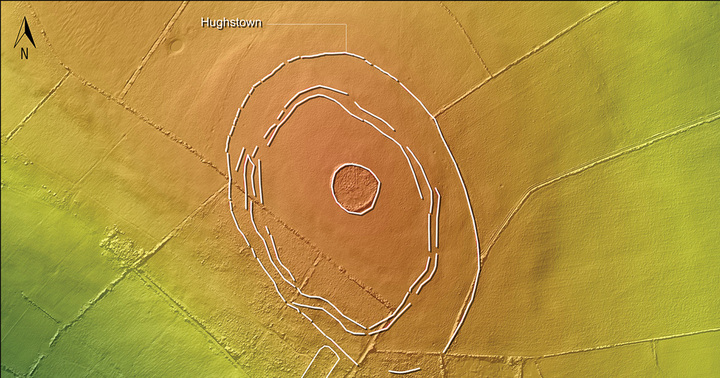
Ancient Ruins
The rolling hills of Ireland are filled with historically significant structures, like cathedrals and castles, and yet some older ruins that date to prehistoric times remain undiscovered because they’re under layers of sediment built up over the countless years.
But thanks to lidar, a technology that uses lasers to map terrain, archaeologists have been able to find forgotten structures hidden in the landscape. Most recently, they say they’ve located a grouping of ancient monuments they say were likely used as “pathways for the dead” in the modern-day town of Baltinglass in County Wicklow.
These structures, called cursus monuments, are five in number and date to the middle of Neolithic era — between 8000 BCE to 2000 BCE — and were earthworks made of trenches or ditches that spanned the landscape, as detailed in new paper in the journal Antiquity.
They range in size from 400 to more than 600 feet long, but the largest spans at 1,312 feet, study author and archaeologist James O’Driscoll from the University of Aberdeen in Scotland told Live Science.
“While we don’t know the actual rituals that took place there, the layouts suggest that they may have been used as either processional routes for mourning or a way to move the dead onto heaven,” said Driscoll, referring to the monuments’ orientation to the morning sun of the summer solstice and their proximity to nearby ancient burial sites.
Tech Tools
Driscoll was able to find these monuments by using lidar, which usually entails flying an airplane or helicopter from which laser pulses are shot at the ground. Data from these tools enabled Driscoll to find telltale structures that suggested the cursus monuments.
An aerial survey company based in Ireland performed a lidar scan of the area that Driscoll was studying back in 2022. Besides the cursus monuments, the scan found previously unknown structures such as a hillfort from the Bronze Age and medieval ringforts.
It’s a long settled area, so finding something new must have been exhilarating.
“Since these [were built during the] Neolithic, there were no metal tools and they would have likely used wooden shovels,” O’Driscoll told Live Science. “It shows just how much resources, time and effort went into building them, since this is a sizable settlement.”
More on archaeology: Scientists Find Ruins of Ancient Cities in Amazon Jungle